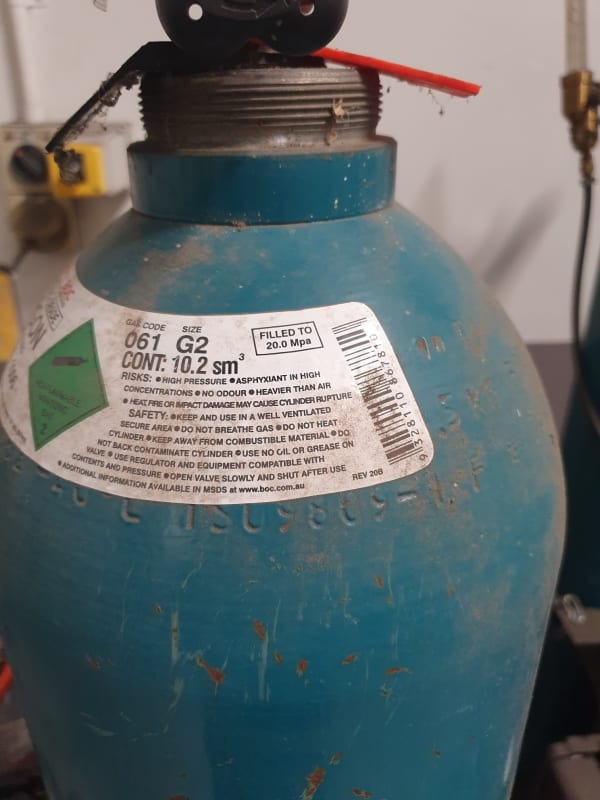And 300 bar is not uncommon in some parts of the world these days.
By way of education, there are lots of ways you could use the information available to you to decide whether the pressures are credible
[ul][li]Read the label on the cylinder if there is one - this is likely to tell you what pressure the filler intended to charge the cylinder to.[/li]
[li]Look at the WC stamping on the shoulder of the cylinder and divide that into the 9.5 m3 (should be about the same)[/li]
[li]Look at the WP stamping on the shoulder of the cylinder - should be about the same, and certainly not lower than the other two[/li]
[li]Look at the inlet pressure rating stamped on the body of the regulator - again, this should be similar and not lower than the first two.[/li]
[li]Look at the range (the number at the top end of the scale) of the regulator inlet pressure gauge. Very roughly, expect the other figures to be about 2/3 to 3/4 of this (This is an admittedly quick and dirty check, but more accurate than you might expect)[/li]
[/ul]
Those all tell you what might once have been in the bottle - not what's there now. If you want confidence in that, you could try something like:
[ul]
[li]Check the inlet gauge reading is no greater than the filling pressure[/li]
[li]Close the cylinder valve[/li]
[li]While watching the needles on both inlet and outlet gauges, slowly vent the outlet[/li]
[li]Check that the needle on the inlet gauge falls steadily (without getting stuck or falling off), that the outlet pressure collapses pretty much as the inlet pressure drops past the outlet pressure setting and that the inlet gauge eventually reaches zero (you're keen to make sure that the inlet gauge doesn't reach the zero stop while the outlet pressure is still being maintained and that the outlet pressure collapse doesn't happen while the inlet gauge is still indicating much larger pressures)[/li]
[/ul]
This doesn't completely calibrate the inlet gauge, but it does test for the most common defects.
As to the 5.5 bar outlet pressure: That's going to be determined by the requirements of your process and may well be adjustable on the regulator. Look at the labelling on the regulator (or apply the 2/3 rule to the outlet gauge).
As a rule of thumb, single stage regulators are usually capable of a turndown ratio of up to about 100 - that is to say that they can accurately reduce pressure down to 1/100th of the maximum inlet pressure. In your case, that would imply that anything above 2.2 to 3 bar is achievable with a single stage - so 5.5 bar doesn't sound at all alarming.
A.

